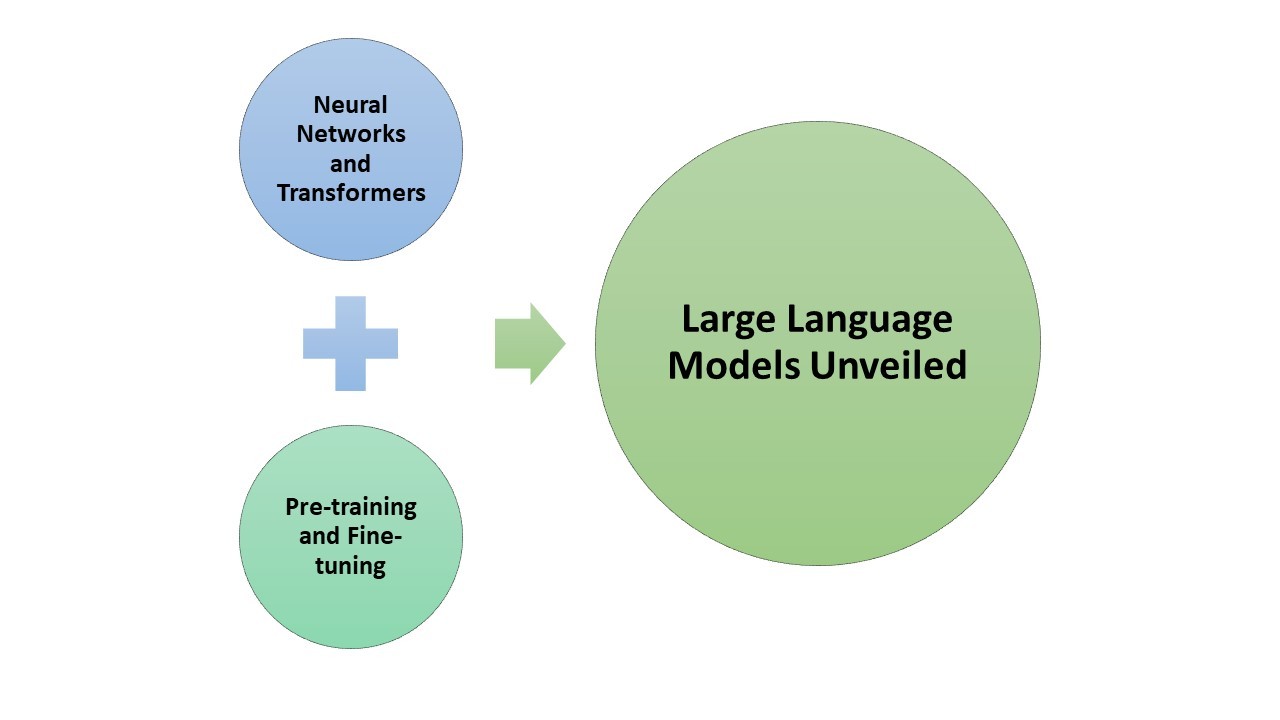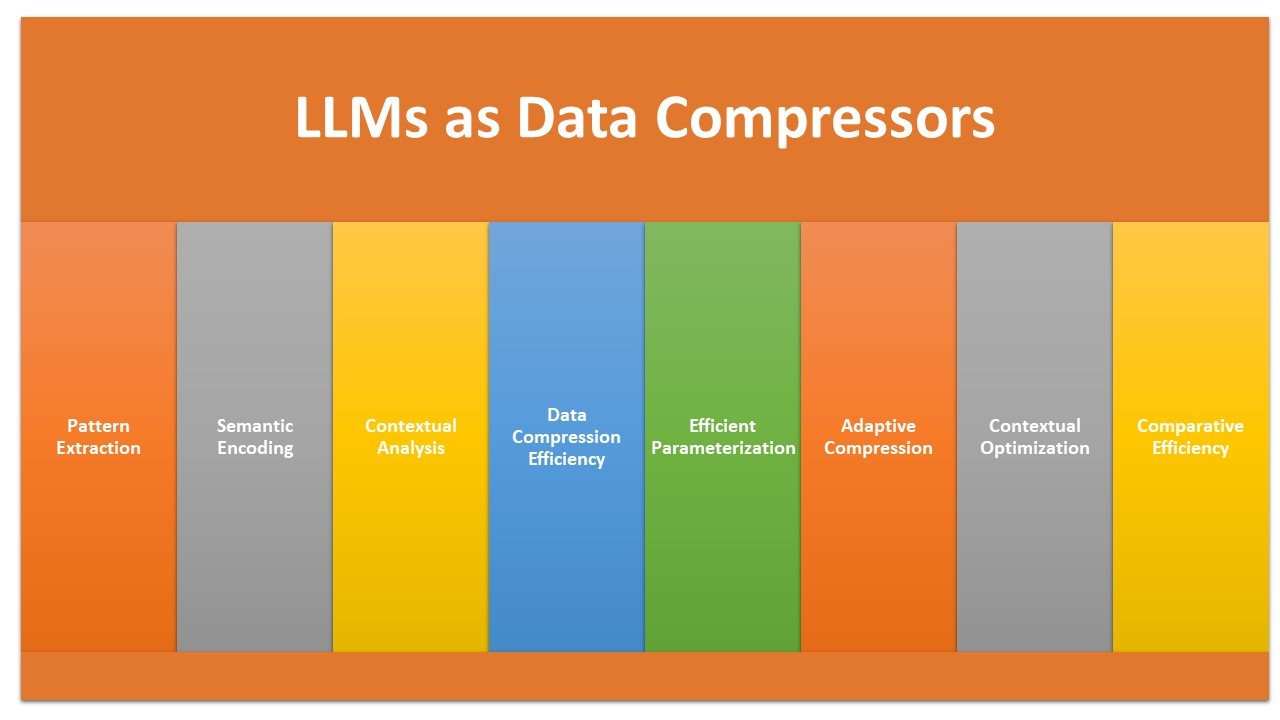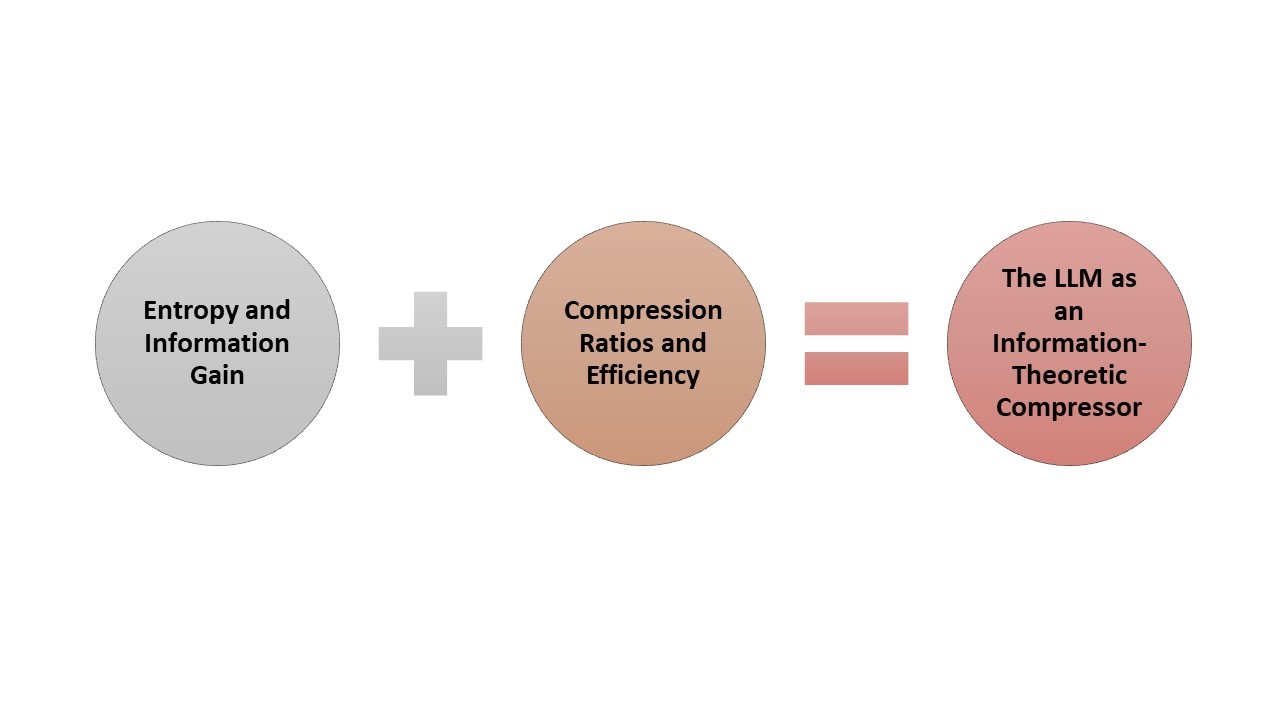Comments
- No comments found

The advent of Large Language Models (LLMs) has revolutionized the field of natural language processing and artificial intelligence.
These models, symbolized by GPT-4 and its successors, are more than just advanced text generators; they are sophisticated information-theoretic data compression engines. This analysis delves deep into the technical underpinnings of LLMs, exploring how they harness mathematical principles from information theory to compress vast volumes of textual data into concise, coherent, and contextually relevant responses.
In recent years, Large Language Models (LLMs) have garnered significant attention for their extraordinary capabilities in natural language understanding and generation. From chatbots to content generation and translation services, these models have showcased their versatility. While they are often perceived as tools for language tasks, they also serve as data compression engines, albeit of a unique kind - information-theoretic data compressors.
Before diving into the technical aspects of LLMs as data compression engines, it is essential to revisit the fundamentals of data compression and understand the theoretical framework upon which LLMs build.
Information theory, founded by Claude Shannon in the mid-20th century, provides the theoretical foundation for understanding data compression. The central idea is to quantify information content and find efficient ways to represent it. Key concepts include entropy, mutual information, and the Kraft inequality.
Entropy is a measure of uncertainty or information content in a dataset. For example, a random sequence of bits with equal probabilities for 0 and 1 has high entropy because it's unpredictable. In contrast, a sequence with a predictable pattern has lower entropy.
This section provides an overview of classical data compression methods, such as Huffman coding and Run-Length Encoding (RLE). These methods aim to reduce data size by eliminating redundancy and representing patterns efficiently. However, they have limitations in handling natural language due to its complexity and contextual nuances.

At the heart of LLMs are neural networks, particularly the Transformer architecture. These networks are designed to process sequences of data, making them well-suited for language tasks. Transformers employ a self-attention mechanism that allows them to weigh the importance of different elements in the input sequence. This mechanism is vital for understanding and generating coherent text.
LLMs are trained in two main phases: pre-training and fine-tuning. In the pre-training phase, models are exposed to vast amounts of text data. They learn to predict the next word in a sentence, capturing grammar, syntax, and common language patterns. Fine-tuning involves training the model on specific tasks, tailoring it to perform well in various applications.

LLMs excel at recognizing and capturing patterns in textual data. These patterns range from simple grammatical structures to more complex semantic relationships. Instead of storing every word and character, LLMs encode these patterns into their parameters, resulting in a compact representation. This is analogous to traditional data compression techniques that represent patterns with shorter codes.
LLMs go beyond patterns; they understand the meaning of words and sentences. This semantic knowledge is encoded in their parameters, allowing them to generate text that carries rich meaning with fewer bits. It's as if they're compressing the essence of language into a smaller form.
One of the distinguishing features of LLMs is their ability to consider context. They analyze the context of a given text passage, which enables them to generate coherent and contextually relevant responses. This contextual analysis is crucial for compressing information effectively while maintaining coherence.
One of the critical aspects of Large Language Models (LLMs) functioning as information-theoretic data compression engines is their remarkable data compression efficiency. This section will delve into how LLMs achieve this efficiency and compare it to traditional data compression methods.
LLMs are designed with a focus on efficient parameterization. This means that they use their vast neural network parameters judiciously to capture the most significant linguistic patterns and semantic information. By selecting and fine-tuning these parameters during training, LLMs can effectively compress data without the need for excessive computational resources. This efficient parameterization enables them to generate coherent text while maintaining a manageable model size.
LLMs employ adaptive compression techniques. Unlike traditional data compression methods like Huffman coding, which use fixed coding schemes, LLMs adapt their compression strategies based on the input data and context. This adaptability allows them to achieve higher compression ratios for data that exhibits predictable patterns and lower compression ratios for more diverse or complex input. It is akin to having a dynamic compression algorithm that adjusts on-the-fly to the specifics of the data being compressed, enhancing efficiency.
One of the reasons LLMs excel as data compressors is their ability to optimize data compression in context. They consider not only the immediate context of a word or phrase but also the broader context of the entire input sequence. This contextual optimization helps LLMs decide how much information to retain and how much to compress, ensuring that the generated text is both concise and coherent within the given context. This dynamic approach to compression enhances their efficiency further.
Comparatively, LLMs outperform traditional data compression techniques in scenarios involving natural language processing. While methods like Huffman coding and Run-Length Encoding are valuable for certain data types, they struggle to handle the complexity, nuance, and contextuality inherent in human language. LLMs' ability to capture not just patterns but also semantics and context gives them a substantial advantage in compressing textual data efficiently.
By efficiently parameterizing, adapting to input data, optimizing in context, and outperforming traditional methods, LLMs demonstrate their prowess as highly efficient information-theoretic data compression engines. This efficiency plays a crucial role in their wide range of applications and their ability to process and generate natural language at scale.

Information theory concepts, such as entropy, help us understand how LLMs achieve data compression. Entropy quantifies the uncertainty or information content of a dataset. LLMs aim to minimize the entropy of their output while preserving essential information, ensuring that the generated text is both concise and meaningful.
LLMs can achieve impressive compression ratios in text generation. By recognizing patterns, encoding semantics, and analyzing context, they compress extensive textual data into shorter, coherent responses. This efficiency is a testament to their prowess as information-theoretic data compressors.

Practical applications of LLMs as data compressors, such as generating text summaries, simplifying content, and enhancing search engines. LLMs' ability to compress information makes them valuable in various domains.
The power of LLMs as data compressors raises ethical questions concerning data privacy, misinformation generation, and bias amplification. These concerns stem from the potential for LLMs to manipulate and disseminate compressed information.
Large Language Models represent a remarkable convergence of advanced neural network architectures and information theory principles. They act as information-theoretic data compression engines, compressing extensive volumes of textual data into concise, contextually relevant responses. Understanding the technical intricacies of LLMs in this role not only sheds light on their capabilities but also poses critical questions regarding their responsible and ethical use in our increasingly data-driven world.
Ahmed Banafa is an expert in new tech with appearances on ABC, NBC , CBS, FOX TV and radio stations. He served as a professor, academic advisor and coordinator at well-known American universities and colleges. His researches are featured on Forbes, MIT Technology Review, ComputerWorld and Techonomy. He published over 100 articles about the internet of things, blockchain, artificial intelligence, cloud computing and big data. His research papers are used in many patents, numerous thesis and conferences. He is also a guest speaker at international technology conferences. He is the recipient of several awards, including Distinguished Tenured Staff Award, Instructor of the year and Certificate of Honor from the City and County of San Francisco. Ahmed studied cyber security at Harvard University. He is the author of the book: Secure and Smart Internet of Things Using Blockchain and AI.
Leave your comments
Post comment as a guest